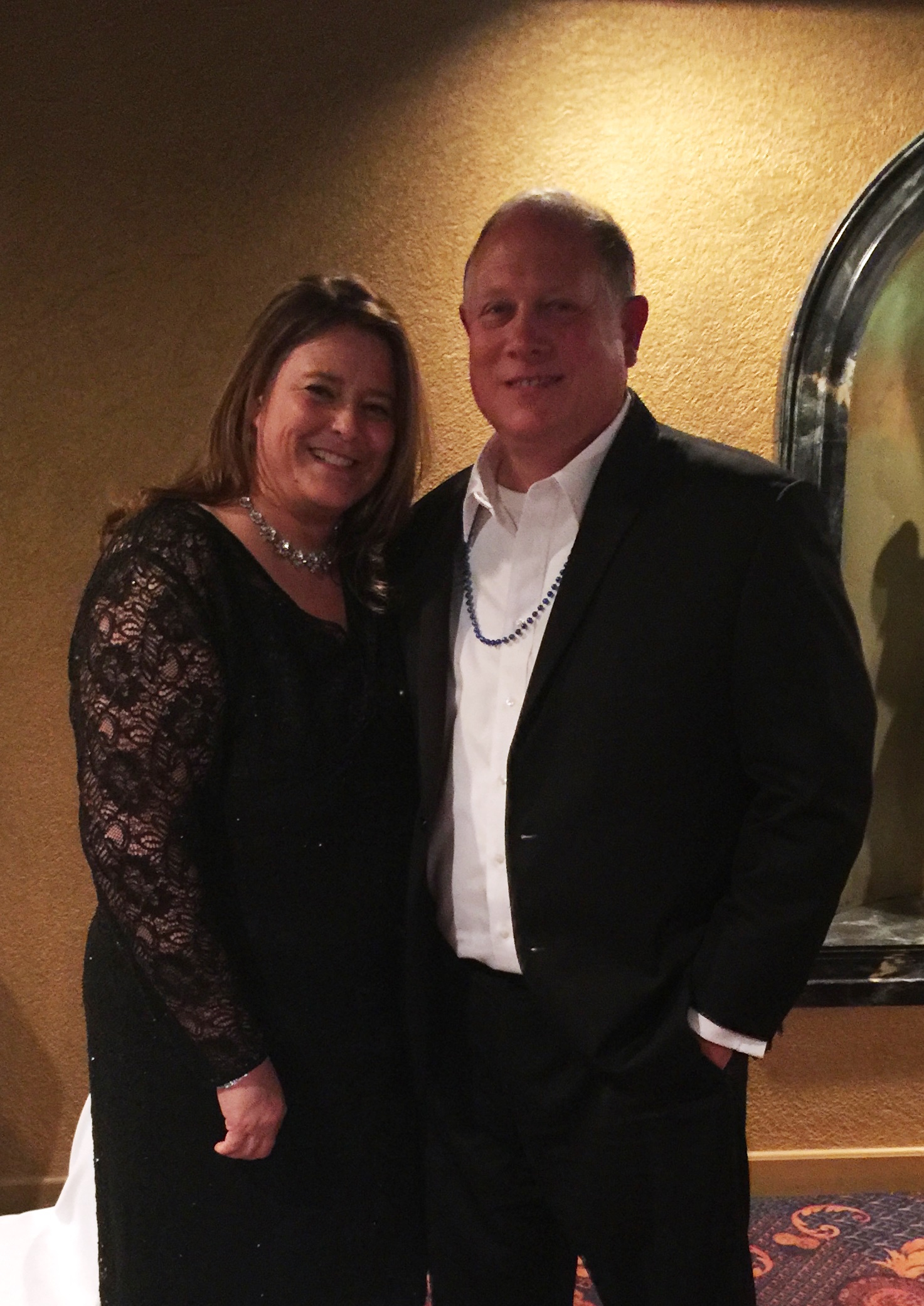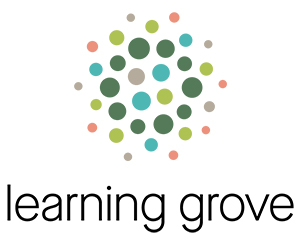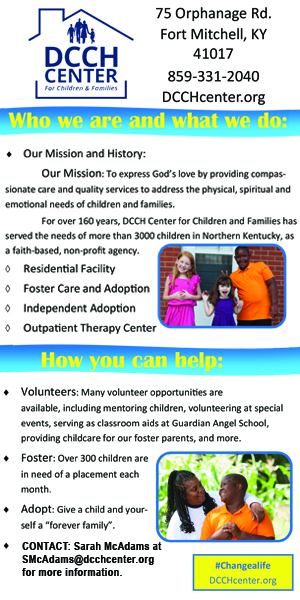By Vicki Prichard
NKyTribune reporter
Shannon Starkey-Taylor likes to tell a story about coming home from school to find her mother, a reading specialist and special education teacher, tutoring a young child.
“I was wondering where my mom was tutoring and saw that she was in the dining room, which was odd because we had an office on the third floor,” says Starkey-Taylor. “And there was this little child beneath the table and my mom was underneath tutoring. The child had autism and felt, sensory-wise, safer under the table.”
Watching her mother work, and listening to her stories about working with children, instilled a commitment to cheer for, and work on behalf of, the underdog – the children who come into the world with a struggle already in place for them. As the newly named CEO of Children, Inc., Starkey-Taylor, brings a wealth of experience and commitment to what is, for her, the most meaningful work.

Shannon on a mission trip.
Deeply rooted values
One might say it’s by design that Starkey-Taylor assumes the role at the helm of an organization committed to development and well-being of children, after all, all she’s ever really known is that investing in the lives of young people, even when she was but a young one herself.
“It’s where my values as a leader are rooted,” Starkey-Taylor says about her childhood, growing up in Mt. Lookout.
“All three of my siblings are adopted, and my aunt was a foster mom in Louisville – she was foster mom of the year in Kentucky.”
Starkey-Taylor describes her childhood as both “nontraditional” and “pretty blessed.” Her mother’s work influenced her commitment to social work and the betterment of children’s lives, while her father, who worked with Proctor and Gamble, and was an entrepreneur, provided a well-balanced perspective on life.
“The influence of my mom, working with children that were not typically developing, is how I put it, and then with my dad’s business acumen, I think it gave me a well-rounded background,” says Starkey-Taylor.
Unlike her friends, she says she didn’t have to think through where her career path would lead.
“It was pretty much paved for me, quite frankly,” she says.
She says she often tells colleagues that she felt like a social worker in diapers.
Aside from her professional path, her childhood provided a blueprint for her personal life as well. Growing up with three adopted siblings, who were eventually reunified with their biological parents, Starkey-Taylor was inspired to foster to adopt as well. In addition to a stepson, she and her husband have a newborn, a one year old, a two-year-old, and a three-year-old, all from the same family.
“I went from no children at home to three at once,” says Starkey-Taylor.
Watching her foster siblings connect with their birth parents, she says she understands that it’s important for adopted children to find people who are like them.

“I think we take for granted those questions that are unanswered for children that are adopted. They look across at people who don’t look like them. I hope I take that knowledge and use with my little girls,” she says.
Spirituality also had a role in Starkey-Taylor’s work with children. Through her church, she was active on mission trips, working with children from South Africa and hosting South African families in her home.
“I’ve always been interested in children, that was very clear to me and modeled through my mom for sure,” she says. “I also did a lot of work when I was in college with the Headstart program. Really, early childhood just became something that made sense to me as far as investing early on. Now, I feel good that I can actually do the work professionally and have some impact personally, like my mom.”
A meaningful professional journey
Starkey-Taylor’s professional journey included a good deal of meaningful work. She spent most of her career at the Children’s Home of Cincinnati, a private, nonprofit organization that provides education and mental health treatment for children facing significant social, behavioral, and learning challenges. When she went there as a “starving master’s level social worker,” she had no idea that she would be there for more than 18 years, the bulk of her career.
“That’s because I had a great mentor with Ellen Katz, who runs the Greater Cincinnati Foundation now,” says Starkey-Taylor. “I learned a lot from her, and currently from Rick [Rick Hulefeld, Children, Inc., founder and former CEO].
“She [Katz] knew that you have to throw opportunities at young talent and keep them stretching and growing. That’s what kept me there that long.”
During her tenure at the Children’s Home of Cincinnati, Starkey-Taylor did everything from lead adoptions to early childhood education. She became vice president of programs, and ultimately, vice president of strategic development, which is where she says she began honing in on executive leadership skills.
“When I was VP of programs, I designed new programs and partnerships, which I still love to do,” says Starkey-Taylor. “I’m passionate about looking at the needs of a community. I feel like I’m good at that, and saying, ‘What new programs can we bring? What programs can we benchmark nationally? And how can we collaborate for collective impact?’”
But after 15 years of designing programs, Katz told Starkey-Taylor she was ready for something else.
“Ellen said, “I need you over here for VP of strategic development; you’re career pathing to CEO. You’ve been a VP of programs for 15 years, you could teach a course on it,”” says Starkey-Taylor.
Her role as VP of strategic development got her involved with board relations, creating a strategic plan, and the creation of a young professional’s board. That experience prepared her for her an executive position with RettSyndrome.org, which works to gain awareness and find a cure for girls who suffer from the life-threatening neurological disorder.
The organization had international programs and Starkey-Taylor reported to a national board. At that point, the full gamut of fundraising was not part of her portfolio, but would be soon.

Shannon Starkey-Taylor
“So, my style was to just go right in. I learned everything from soup to nuts. I did everything from special events to capital campaigns, to major gifts, working with a remote staff,” she says.
The work gave her exposure to parents that are on boards and how that can be both challenging and rewarding, because they were all affected by the cause.
“I met great individuals who were passionate about the cause,” she says.
Over the years, Starkey-Taylor came in contact with many like-minded individuals who were passionate about making a difference in the life of a child.
Gather around a table to do good work
Starkey-Taylor first became acquainted with Children, Inc., 22 years ago when she was with the Children’s Home of Cincinnati. She founded a consortium for resilient young children, a collaborative that looked at children who were being kicked out of child care centers, to find out what could be done about it.
“We were getting calls at the Children’s Home because we had an expertise in early childhood mental health, and we were like, “Gosh, how can we help schools and child care centers?” Starkey-Taylor says. “We were helping schools, but that was when children were five years old and up. My collaborative style is pretty grassroots – it’s to get people around the table when no money is there and say, “Are you experiencing this problem?””
She called Lottman, at Children, Inc. and told him what they were seeing on their side of the river.
Lottman and Starkey-Taylor had also been instrumental in getting the local initiative, Every Child Succeeds off the ground, but it was gathering around the table for the work that led to the consortium that formed a close partnership.
“Where we really became very close partners was getting around the table, and that led to the consortium, and a program that wasn’t funded getting over a million dollars, and it still exists today with the same member organization,” she says.
Lottman, like Starkey-Taylor, is innovative and entrepreneurial, she says, so they look at problems together and think through solutions, particularly collaborations.
“Collaborations are very popular now, but they weren’t that popular back then. We really knew that the solution to keeping children in their own preschool program was going to take more than just one agency,” she says. “We created a pretty powerful model that led to less children getting kicked out of classrooms.
The path that led to Children, Inc.
Throughout her time at RettSyndrome.org, Starkey-Taylor stayed in contact with Hulefeld and Tom Lottman, Children, Inc.’s research director – individuals whose decades of work illustrated the same commitment to improving the lives of children and families. When Hulefeld and Lottman learned.
While she loved her work with RettSyndrome.org, she missed health and human services. Opportunities to connect with clients, the children and parents who were impacted by the mission, she generally had to board a plane. She knew it was time to make a change. When Hulefeld and Lottman learned that Starkey-Taylor had left her position at RettSyndrome.org, they suggested she could be a great successor to Hulefeld. With that in mind, Starkey-Taylor says she stayed on a strategic professional path and kept in contact with the two.
“I knew early on that I didn’t want to do residential treatment or clinical work, so I went from youth work to clinical therapy, and just had a little tug for leadership and was on that path ever since,” she says.
Starkey-Taylor came on board at Children, Inc. as chief operating officer (COO), positioned to take the lead when longtime founder and CEO Hulefeld was ready to pass the baton. When the time came, she was ready.
“This is a job I’ve been eyeing for some time,” says Starkey-Taylor, adding that some critics winced at the thought of becoming the first CEO after the founding CEO’s leadership.

Shannon and three of her girls
“I’m really, God honest truth, not nervous about it,” she says. “I know Rick, I know this organization, I know the staff, and nobody’s going to let the mission fail.”
She says she and Rick have a good approach: if and when things “get muddy,” they’ll talk about it.
“He has so much institutional knowledge,” she says. “He’s been nothing but gracious, and he has his legacy in the right place, which is sustainability.”
Starkey-Taylor says she’ll make sure to get the needs of the organization met, but her style is to honor Hulefeld’s legacy. She says the style aspect that she and Hulefeld share is “a lot of humor.”
“We have so much fun and we really work hard,” she says.
A bold, but humble, leader
As for leadership styles, Starkey-Taylor says hers is one that tolerates a lot of ambiguity.
“I’ve had a lot of people say that my leadership style is very calm, and I do think that my past has helped, because in my world, I would show up at my aunt’s in Kentucky and she would have a different foster child at Thanksgiving and we would just add another seat, and say, ‘This is our new cousin,”” she says. “I didn’t have a really traditional view, and it was messy but wonderful and it allowed me to not be very rigid and ebb and flow.”
Starkey-Taylor says she realizes that with a transition – transitioning after a founder – that you can map out things as clear as day, with regard to designated roles, but to totally avoid what is referred to as “founder’s syndrome,” it’s necessary to have a relationship built upon trust, mutual respect, and the ability to have critical conversations, and to tolerate ambiguity.
“I really feel blessed,” she says. “Rick and I have addressed that and we feel like, why not? Why can’t we be an example of a succession plan that’s gone right? The hiring of me as COO was very intentional, very matter of fact that this is what’s supposed to happen.”
“I’m also a very humble leader, and I feel like there’s space for many around the table, but yet I’m bold and I’ll get needs met,” Starkey-Taylor. “Advancing the organization, sustaining it after 40 years, that’s hard work, and we both have a vested interest in making that work. We’re both very centered on children living in poverty. I view that as a moral obligation, something that is part of my DNA. I feel very honored.”
Starkey-Taylor says her real love is looking outward, into the future, and creating partnerships and relationships.
“The foundation is strong here, the culture is phenomenal, with the people that we’ve attracted, hired, attracted and retained, so I feel like it’s the time to actually get a little bit more sophisticated,” she says. I don’t know if we’ve grown into totally a medium to large size nonprofit. With our budget close to 12 million we need to make sure that we have systems in place, and people in place to structure that.”
She says the Children, Inc., capital campaign goal of five million dollars is moving “really well.

Shannon and her husband Jeff
She points out that the Children, Inc. board is in a transition period, moving the organization into a culture of philanthropy from the board chair down.
“I’ll be spending a lot of time with new board members and setting out what we want board performance to look like, what doors they can open that haven’t been opened,” Starkey-Taylor says.
She says she anticipates Children, Inc. playing a larger role related to children living in poverty.
“We’re really honing in on birth to three. There’s been a lot of focus on preschool and kindergarten readiness, but that often, sad to say, is too late. What are our interventions related to infants, toddlers and preschoolers?” she says.
She also hopes to increase the organization’s visibility.
“I think our Innovation Lab is a competitive advantage and a gift to the community that has been a little understated, so I hope to increase the visibility of that program,” Starkey-Taylor says.
She credits Elizabeth Fricke, Children, Inc.’s senior director of marketing and talent management, with successfully executing a brand-raising campaign.
“Children Inc. is a bit of a quiet competency, and that’s okay, but if we want to expand our mission and get more people access to our services we can still, humbly, send out our message.”
A two-fold approach to children living in poverty
While children living in poverty has long been Children, Inc.’s target population, Starkey Taylor says they’re now taking a multigenerational approach, so as to be intentional with programs and support services, and be accountable through outcomes that track beyond the child. She points out that while they can provide high-quality daycare, if a family is struggling financially, unable to make ends meet, then they’re not really holistically tending to the family.
“Our approach is two-fold,” says Starkey-Taylor. “One is to imbed our early child services in centers that work on financial stability – Life Learning Center and CityLink Center are two examples of how we’re doing that.”
Because Children, Inc. is a trusted and consistent present in the lives of children they are naturally positioned to build relationships with the parents.
“So why not also help them with their family outcome?” she says.
The second approach, she says, is to make sure their leadership academy, which helps parents realize the significant role they play in their child’s life, is incorporated with programs that are not co-linked, and put that into Children, Inc.’s early child centers.
“Finally, we think, humbly, that we’ve been preventing, so to speak, poverty, because we’ve been providing a high-quality service for parents, a support, so they can work. If they can’t work they’ll just go further into poverty, and the future poverty, if we can be bold enough to say, because if children are ready for kindergarten, they’re ready, for third grade, and etcetera,” she says.
Starkey-Taylor says that with Navigo, which is Children, Inc.’s newest college and career coaching program, founded by Tim Hanner, they will work with high school students to have a transition plan to college or career.
“Then they’ll be on the path to self-sufficiency sooner and might not be repeating some generational poverty in the family,” she says.
“I’m personally very passionate about it as evidenced through my mission trips and my work with nonprofits. I’m so glad that the community is focused on this,” says Starkey-Taylor. “I’m so glad that Rick and my values are aligned to it. He’s always prioritized low income families.”


















